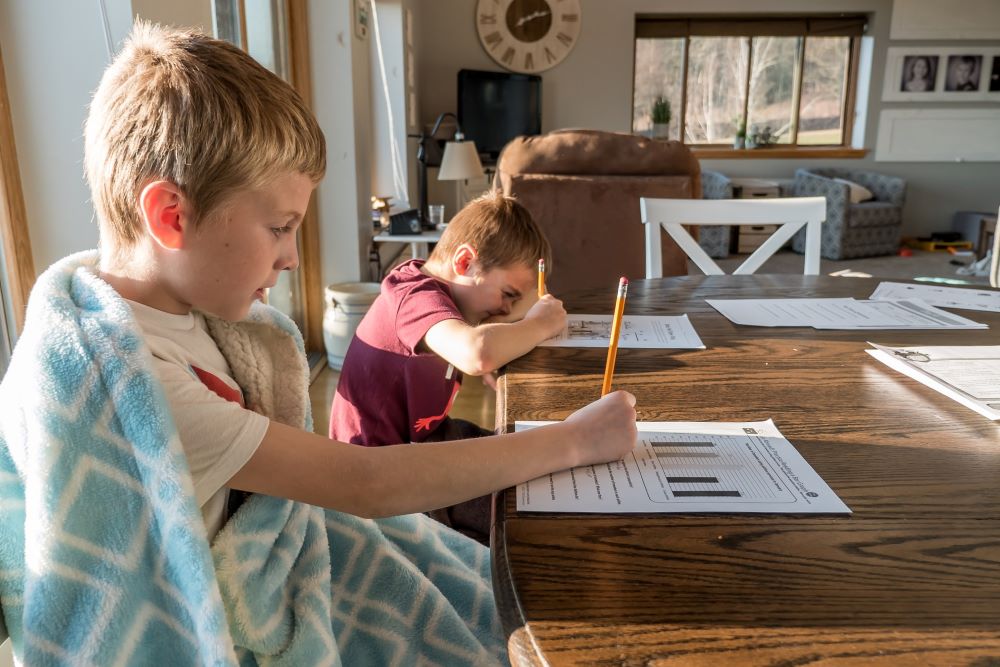
We are a reader-supported education publication. When you buy through links on our site, we may earn an affiliate commission to help us keep providing content.
If you’re new to homeschooling, the process of directing your children’s education may seem overwhelming. You may be worried that you’re not smart enough to teach your kids or feel unsure where to start. A quick Google search will reveal that you’re not alone – many homeschooling parents worry about teaching their kids.
Thankfully, there’s a wealth of resources available to help new homeschool families get started. You do have what it takes and you can guide your kids to be well-educated, well-socialized and well-adjusted. Here are six tips to calm your nerves and help you start your homeschooling journey on the right foot.
- Choose a Philosophy
There are many different ways to approach homeschooling and some may work better for your kids than others. Start by thinking about your educational goals – what skills do you want your kids to develop? Why do those matter to you? Your philosophy of education will drive every homeschool decision you make.
An educational philosophy describes what education means to you and why you think it matters. What would it mean for your children to be well-educated? How do you want them to use their knowledge? Learning is much bigger than modern schooling. Education can also include building character, life skills and a healthy sense of self.
- Try Out a Curriculum
Homeschoolers use many different kinds of educational curriculum with success. Many homeschoolers use traditional textbooks and workbooks to teach different subjects. Parents who like classical education build their curriculum on the Trivium, an educational concept that recognizes three distinct stages of learning.
Homeschoolers who like a more holistic approach and spending time outside often use Charlotte Mason’s curriculum. Some homeschoolers are eclectic, mixing several different styles to suit each of their child’s needs. Busy homeschool parents may invest in an online homeschool curriculum. Research basic teaching styles and start with the method that looks best to you.

- Plan a Schedule
Because you’re the teacher, principal and cafeteria person, you can decide what you want your homeschool day to look like. Homeschooling usually doesn’t take as much time as traditional school because your kids won’t need to ride the bus or finish homework later. Some families work through all their material by lunch, while others like to have a slow morning and then work in the afternoon.
Check to see if your state has hourly guidelines for how much time each grade level should be studying every day. For families with young kids, two to three hours is usually enough school time. As your kids get older, you can extend their study hours so they can get through more complicated high school subjects.
- Make It Your Own
When you homeschool, you don’t have to follow the traditional school calendar. Learning at home gives your family more freedom to round out your kids’ education with activities you care about. For example, many homeschooler families travel, volunteer and spend hours hiking or playing outdoors. What do you want to make time for?
With the right planning, your kids can reach educational benchmarks while gaining real-world experience. Homeschooling can also foster lifelong friendships within families because you spend so much time together. Don’t be afraid to challenge traditional educational perspectives – choose what’s important to you and make this journey your own.

- Build a Community
Although you can make this journey alone, it’s a lot more fun with friends. See if there are any homeschool groups in your area so you can connect with other homeschoolers. Community will bring you encouragement, give you new ideas and help your kids make lifelong friends.
You may also be able to join a co-op where parents take turns teaching kids classes and life skills. Some co-ops are meant to replace a day of serious schooling, while others are simply a chance to get together and have fun. Another perk of homeschooling is that you can be intentional about your kids’ friends.
- Adjust for Your Family
Every family is different, so it makes sense that your homeschool will be unique. Although it may feel intimidating to strike out on your own, you know what’s best for your kids. It’s important to create a plan for meeting your goals, but it’s okay to change your strategy for success along the way. Remember that homeschooling is a learning journey for you and your kids.
The luxury of homeschooling is that you can meet educational needs while staying flexible in response to life events. For example, your kids can double up their work and finish early so you can take a long family vacation. If it works better for your family, you can plan four long homeschool days a week instead of the usual five.
One Year at a Time
Many families find the courage to start homeschooling by committing to one year of home education at a time. If you hate it and decide it’s not for your family, you can put your kids in school next year. However, many families decide after a year of learning at home that they love homeschooling and the way it serves their family.
Use these six tips to start your homeschooling journey. Begin with an educational philosophy, and choose a curriculum that suits your family’s lifestyle. Give yourself permission to be flexible and make homeschooling your own. Finally, don’t forget to connect with other homeschoolers and build a supportive community. You’ve got this!
latest in learning!
Get the latest updates in learning, teaching and everything in between! Whether you're a student or an educator, we offer the inspiration you need to fuel your classroom experience.









